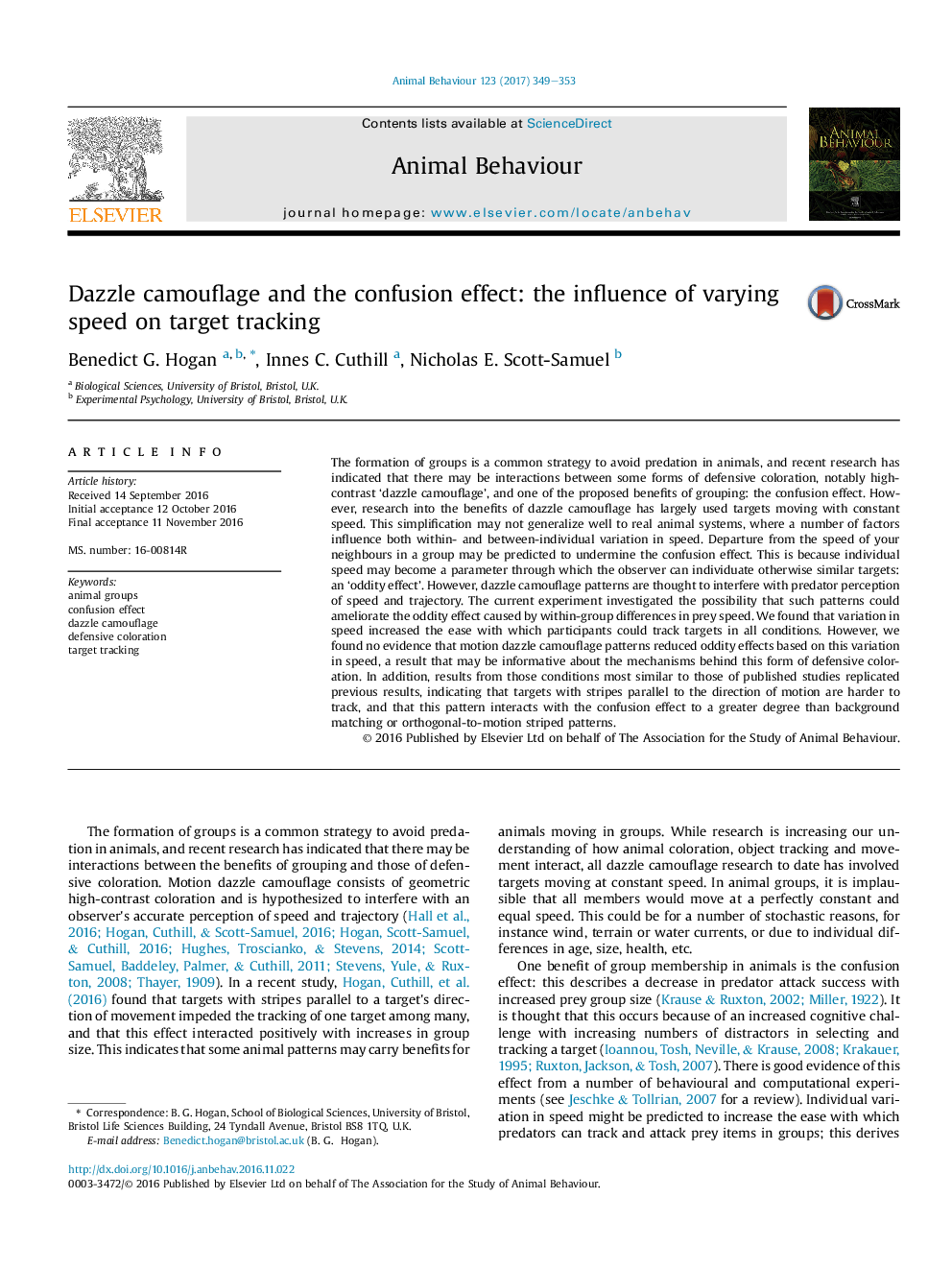| Article ID | Journal | Published Year | Pages | File Type |
|---|---|---|---|---|
| 5538599 | Animal Behaviour | 2017 | 5 Pages |
Abstract
The formation of groups is a common strategy to avoid predation in animals, and recent research has indicated that there may be interactions between some forms of defensive coloration, notably high-contrast 'dazzle camouflage', and one of the proposed benefits of grouping: the confusion effect. However, research into the benefits of dazzle camouflage has largely used targets moving with constant speed. This simplification may not generalize well to real animal systems, where a number of factors influence both within- and between-individual variation in speed. Departure from the speed of your neighbours in a group may be predicted to undermine the confusion effect. This is because individual speed may become a parameter through which the observer can individuate otherwise similar targets: an 'oddity effect'. However, dazzle camouflage patterns are thought to interfere with predator perception of speed and trajectory. The current experiment investigated the possibility that such patterns could ameliorate the oddity effect caused by within-group differences in prey speed. We found that variation in speed increased the ease with which participants could track targets in all conditions. However, we found no evidence that motion dazzle camouflage patterns reduced oddity effects based on this variation in speed, a result that may be informative about the mechanisms behind this form of defensive coloration. In addition, results from those conditions most similar to those of published studies replicated previous results, indicating that targets with stripes parallel to the direction of motion are harder to track, and that this pattern interacts with the confusion effect to a greater degree than background matching or orthogonal-to-motion striped patterns.
Related Topics
Life Sciences
Agricultural and Biological Sciences
Animal Science and Zoology
Authors
Benedict G. Hogan, Innes C. Cuthill, Nicholas E. Scott-Samuel,
